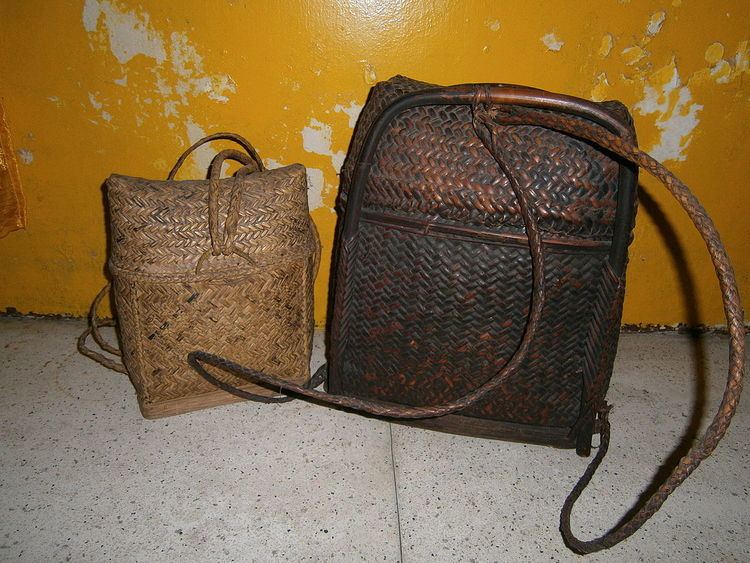 | ||
The pasiking (English term:knapbasket) is the indigenous basket-backpack found among the various ethno-linguistic groups of Northern Luzon in the Philippines. Pasiking designs may have sacred allusions, although many are purely aesthetic. These artifacts, whether handwoven traditionally or with contemporary variations, are considered exemplars of functional basketry in the Philippines and among Filipinos.
The ritual pasiking of the Ifugao tribal group is called the inabnutan, not to be confused with the more common bangeo. The ritual pasiking of the Bontoc people is called the takba.
Some of the Northern Philippine tribal groups called Igorots or Cordillerans that weave pasikings are the Apayaos or Isneg, the Tinguian of Abra province, the Kalingas of Kalinga province, the Gaddang, the Bugkalot, the Applai, the Bontocs of Bontoc, Mountain Province, the Ilagod, the Bago, the Kankana-ey, the Balangao, the Ibaloi, the Ifugaos, the Ikalahan, the Kalanguya, the Karao, and the Ilongots. It is also woven using rattan by non-Cordilleran persons.
A deconstructed version of the pasiking was featured in the BenCab Museum. There are also pasikings that are made of recyclable materials like plastic.
In the 1970s on through the 1980s, the pasiking has also been a symbol among Filipino students for nationalist activism. There was a decline of making traditional bamboo crafts, including the pasiking, during the 1980s but in the mid-2010s, the industry of bamboo crafts came into resurgence with the help of the Philippines' Department of Trade and Industry.
